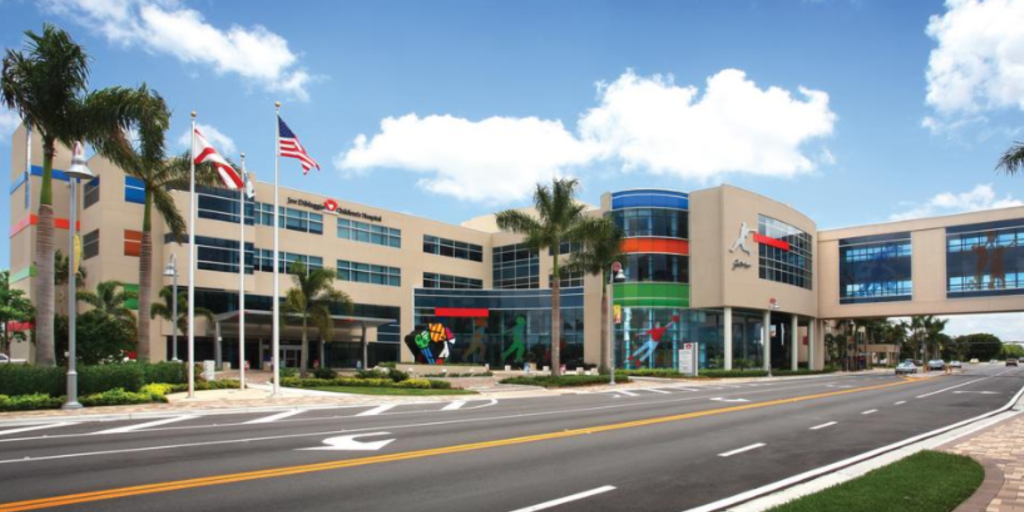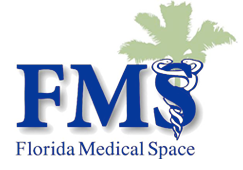

Mergers among healthcare companies and providers has been a driving force behind changes in the industry and how physicians interact with patients, according to a Marcus & Millichap Medical Office National Report.
According to the report, emerging technologies and a shift in the care delivery model are spilling over into the development of medical offices. A rise in outpatient services and procedures has encouraged medical office development in off-campus locations over the past few years. Hospitals and medical providers seek to place offices in neighborhoods and suburban areas, closer to where people live and work, in order to reduce costs and appeal to patients seeking medical care. While these factors bode well for today’s medical office market, the industry still faces numerous challenges as an aging population is met with a physician shortage, rising healthcare costs and insurance reform uncertainty. Despite these challenges, patient demand for services remains strong and will continue to drive further expansion and growth in the medical office building sector.
Source: Marcus & Millichap
Source: Marcus & Millichap

A clinical trial for an innovative bioelectronic device to treat patients with rheumatoid arthritis is now underway at Memorial Healthcare System headquartered in Hollywood.
“Our neurosurgery team was the first in the country to implant the SetPoint Medical device in this multicenter national trial,” said Dr. Heather Spader, director of pediatric neurosurgery research at Memorial’s Joe DiMaggio Children’s Hospital across from Memorial Regional Hospital. “It delivers targeted electrical pulses to the vagus nerve that triggers the body’s biological response, creating a systemic pain-fighting effect. Early clinical data suggests this therapy is well tolerated, and we hope it may help people suffering from rheumatoid arthritis where other treatment protocols have been unsuccessful.”
The SetPoint phase I and II clinical trial, which began in May and is still enrolling adult participants, is among the dozens of research studies now underway at Memorial Healthcare System.
“We started our research program seven years ago in oncology, and now have more than 100 physicians in about 36 specialties involved in clinical trials from the treatment of strokes to minimally invasive surgery to immunotherapy for cancer patients,” said Dr. Candice Sareli, chief medical research officer. “Along with the trials, we plan to expand our own investigator-driven research, providing participants with even more opportunities to access medications and devices at an early stage.”
In addition, Memorial has partnered with Moffitt Cancer Center in Tampa to establish a Malignant Hematology & Cellular Therapy program, providing advanced bone and marrow cellular transplant care to leukemia and lymphoma patients.
As one of the largest public healthcare systems in the country, Memorial is a vital contributor to Hollywood’s economy, while bringing national attention to the south Broward community as a hub for healthcare innovation and medical research.
“Memorial’s leading-edge, high-quality patient care is a major asset to everyone in our region,” said Gus Zambrano, assistant city manager for sustainable development for the city of Hollywood. “Today, Memorial is also an important center for medical research, attracting talented healthcare professionals to our community.”
The city’s strategic plan reflects the importance of the healthcare sector, which constitutes about 19 percent of Hollywood’s economy, according to Zambrano. “Memorial is a critical asset as we focus on growing this vital sector,” he said.
Based in the city of Hollywood since its inception in 1953, Memorial Healthcare System and its facilities have been nationally recognized for providing high-quality care, and being one of the “best workplaces” in the country. The American Hospital Association selected Memorial from more than 5,000 U.S. hospitals as the national model for improving the health of the community, and American Essential Hospitals honored Memorial with the 2017 Gage Award for Population Health.
Memorial is also a growing academic center, with medical residency programs in physical medicine and rehabilitation, internal medicine and pediatrics. Future residency programs will include psychiatry, neurology, general surgery, obstetrics and gynecology, and emergency medicine.
In keeping with its mission, Memorial will continue to build its research program with a growing number of trials like the nerve stimulator for rheumatoid arthritis. “This device is more advanced and easier to maintain than prior stimulators,” said Spader. “Our hope is that this will reduce inflammation and allow patients to reduce the number of medications they are now taking for arthritis.”
Other research studies now underway at Memorial include using a device to lower the blood pressure for patients whose hearts are failing, and innovative clotting approaches in interventional cardiology, where catheters are inserted in the radial artery near the thumb, rather than in the groin.
“We are also involved in immunotherapy and vaccine studies for patients with breast and lung cancer that involve training the body to recognize and attack tumor cells,” Sareli said. “Other blanket trials involve the use of biomarkers that could point the way to similar types of treatment for different types of cancers.”
As for the region’s youngest patients, Sareli said Memorial’s Joe DiMaggio Children’s Hospital is part of the Children’s Oncology Group (COG), a nationwide collaboration of pediatric oncologists. “Being able to share clinical data and take part in new research studies is an important aspect of our program,” said Sareli. “It’s one of the many ways our specialists are contributing to the long-term health of our Hollywood community.”
Source: SFBJ
The SetPoint phase I and II clinical trial, which began in May and is still enrolling adult participants, is among the dozens of research studies now underway at Memorial Healthcare System.
“We started our research program seven years ago in oncology, and now have more than 100 physicians in about 36 specialties involved in clinical trials from the treatment of strokes to minimally invasive surgery to immunotherapy for cancer patients,” said Dr. Candice Sareli, chief medical research officer. “Along with the trials, we plan to expand our own investigator-driven research, providing participants with even more opportunities to access medications and devices at an early stage.”
In addition, Memorial has partnered with Moffitt Cancer Center in Tampa to establish a Malignant Hematology & Cellular Therapy program, providing advanced bone and marrow cellular transplant care to leukemia and lymphoma patients.
As one of the largest public healthcare systems in the country, Memorial is a vital contributor to Hollywood’s economy, while bringing national attention to the south Broward community as a hub for healthcare innovation and medical research.
“Memorial’s leading-edge, high-quality patient care is a major asset to everyone in our region,” said Gus Zambrano, assistant city manager for sustainable development for the city of Hollywood. “Today, Memorial is also an important center for medical research, attracting talented healthcare professionals to our community.”
The city’s strategic plan reflects the importance of the healthcare sector, which constitutes about 19 percent of Hollywood’s economy, according to Zambrano. “Memorial is a critical asset as we focus on growing this vital sector,” he said.
Based in the city of Hollywood since its inception in 1953, Memorial Healthcare System and its facilities have been nationally recognized for providing high-quality care, and being one of the “best workplaces” in the country. The American Hospital Association selected Memorial from more than 5,000 U.S. hospitals as the national model for improving the health of the community, and American Essential Hospitals honored Memorial with the 2017 Gage Award for Population Health.
Memorial is also a growing academic center, with medical residency programs in physical medicine and rehabilitation, internal medicine and pediatrics. Future residency programs will include psychiatry, neurology, general surgery, obstetrics and gynecology, and emergency medicine.
In keeping with its mission, Memorial will continue to build its research program with a growing number of trials like the nerve stimulator for rheumatoid arthritis. “This device is more advanced and easier to maintain than prior stimulators,” said Spader. “Our hope is that this will reduce inflammation and allow patients to reduce the number of medications they are now taking for arthritis.”
Other research studies now underway at Memorial include using a device to lower the blood pressure for patients whose hearts are failing, and innovative clotting approaches in interventional cardiology, where catheters are inserted in the radial artery near the thumb, rather than in the groin.
“We are also involved in immunotherapy and vaccine studies for patients with breast and lung cancer that involve training the body to recognize and attack tumor cells,” Sareli said. “Other blanket trials involve the use of biomarkers that could point the way to similar types of treatment for different types of cancers.”
As for the region’s youngest patients, Sareli said Memorial’s Joe DiMaggio Children’s Hospital is part of the Children’s Oncology Group (COG), a nationwide collaboration of pediatric oncologists. “Being able to share clinical data and take part in new research studies is an important aspect of our program,” said Sareli. “It’s one of the many ways our specialists are contributing to the long-term health of our Hollywood community.”
Source: SFBJ
In addition, Memorial has partnered with Moffitt Cancer Center in Tampa to establish a Malignant Hematology & Cellular Therapy program, providing advanced bone and marrow cellular transplant care to leukemia and lymphoma patients.
As one of the largest public healthcare systems in the country, Memorial is a vital contributor to Hollywood’s economy, while bringing national attention to the south Broward community as a hub for healthcare innovation and medical research.
“Memorial’s leading-edge, high-quality patient care is a major asset to everyone in our region,” said Gus Zambrano, assistant city manager for sustainable development for the city of Hollywood. “Today, Memorial is also an important center for medical research, attracting talented healthcare professionals to our community.”
The city’s strategic plan reflects the importance of the healthcare sector, which constitutes about 19 percent of Hollywood’s economy, according to Zambrano. “Memorial is a critical asset as we focus on growing this vital sector,” he said.
Based in the city of Hollywood since its inception in 1953, Memorial Healthcare System and its facilities have been nationally recognized for providing high-quality care, and being one of the “best workplaces” in the country. The American Hospital Association selected Memorial from more than 5,000 U.S. hospitals as the national model for improving the health of the community, and American Essential Hospitals honored Memorial with the 2017 Gage Award for Population Health.
Memorial is also a growing academic center, with medical residency programs in physical medicine and rehabilitation, internal medicine and pediatrics. Future residency programs will include psychiatry, neurology, general surgery, obstetrics and gynecology, and emergency medicine.
In keeping with its mission, Memorial will continue to build its research program with a growing number of trials like the nerve stimulator for rheumatoid arthritis. “This device is more advanced and easier to maintain than prior stimulators,” said Spader. “Our hope is that this will reduce inflammation and allow patients to reduce the number of medications they are now taking for arthritis.”
Other research studies now underway at Memorial include using a device to lower the blood pressure for patients whose hearts are failing, and innovative clotting approaches in interventional cardiology, where catheters are inserted in the radial artery near the thumb, rather than in the groin.
“We are also involved in immunotherapy and vaccine studies for patients with breast and lung cancer that involve training the body to recognize and attack tumor cells,” Sareli said. “Other blanket trials involve the use of biomarkers that could point the way to similar types of treatment for different types of cancers.”
As for the region’s youngest patients, Sareli said Memorial’s Joe DiMaggio Children’s Hospital is part of the Children’s Oncology Group (COG), a nationwide collaboration of pediatric oncologists. “Being able to share clinical data and take part in new research studies is an important aspect of our program,” said Sareli. “It’s one of the many ways our specialists are contributing to the long-term health of our Hollywood community.”
Source: SFBJ
“Memorial’s leading-edge, high-quality patient care is a major asset to everyone in our region,” said Gus Zambrano, assistant city manager for sustainable development for the city of Hollywood. “Today, Memorial is also an important center for medical research, attracting talented healthcare professionals to our community.”
The city’s strategic plan reflects the importance of the healthcare sector, which constitutes about 19 percent of Hollywood’s economy, according to Zambrano. “Memorial is a critical asset as we focus on growing this vital sector,” he said.
Based in the city of Hollywood since its inception in 1953, Memorial Healthcare System and its facilities have been nationally recognized for providing high-quality care, and being one of the “best workplaces” in the country. The American Hospital Association selected Memorial from more than 5,000 U.S. hospitals as the national model for improving the health of the community, and American Essential Hospitals honored Memorial with the 2017 Gage Award for Population Health.
Memorial is also a growing academic center, with medical residency programs in physical medicine and rehabilitation, internal medicine and pediatrics. Future residency programs will include psychiatry, neurology, general surgery, obstetrics and gynecology, and emergency medicine.
In keeping with its mission, Memorial will continue to build its research program with a growing number of trials like the nerve stimulator for rheumatoid arthritis. “This device is more advanced and easier to maintain than prior stimulators,” said Spader. “Our hope is that this will reduce inflammation and allow patients to reduce the number of medications they are now taking for arthritis.”
Other research studies now underway at Memorial include using a device to lower the blood pressure for patients whose hearts are failing, and innovative clotting approaches in interventional cardiology, where catheters are inserted in the radial artery near the thumb, rather than in the groin.
“We are also involved in immunotherapy and vaccine studies for patients with breast and lung cancer that involve training the body to recognize and attack tumor cells,” Sareli said. “Other blanket trials involve the use of biomarkers that could point the way to similar types of treatment for different types of cancers.”
As for the region’s youngest patients, Sareli said Memorial’s Joe DiMaggio Children’s Hospital is part of the Children’s Oncology Group (COG), a nationwide collaboration of pediatric oncologists. “Being able to share clinical data and take part in new research studies is an important aspect of our program,” said Sareli. “It’s one of the many ways our specialists are contributing to the long-term health of our Hollywood community.”
Source: SFBJ
Based in the city of Hollywood since its inception in 1953, Memorial Healthcare System and its facilities have been nationally recognized for providing high-quality care, and being one of the “best workplaces” in the country. The American Hospital Association selected Memorial from more than 5,000 U.S. hospitals as the national model for improving the health of the community, and American Essential Hospitals honored Memorial with the 2017 Gage Award for Population Health.
Memorial is also a growing academic center, with medical residency programs in physical medicine and rehabilitation, internal medicine and pediatrics. Future residency programs will include psychiatry, neurology, general surgery, obstetrics and gynecology, and emergency medicine.
In keeping with its mission, Memorial will continue to build its research program with a growing number of trials like the nerve stimulator for rheumatoid arthritis. “This device is more advanced and easier to maintain than prior stimulators,” said Spader. “Our hope is that this will reduce inflammation and allow patients to reduce the number of medications they are now taking for arthritis.”
Other research studies now underway at Memorial include using a device to lower the blood pressure for patients whose hearts are failing, and innovative clotting approaches in interventional cardiology, where catheters are inserted in the radial artery near the thumb, rather than in the groin.
“We are also involved in immunotherapy and vaccine studies for patients with breast and lung cancer that involve training the body to recognize and attack tumor cells,” Sareli said. “Other blanket trials involve the use of biomarkers that could point the way to similar types of treatment for different types of cancers.”
As for the region’s youngest patients, Sareli said Memorial’s Joe DiMaggio Children’s Hospital is part of the Children’s Oncology Group (COG), a nationwide collaboration of pediatric oncologists. “Being able to share clinical data and take part in new research studies is an important aspect of our program,” said Sareli. “It’s one of the many ways our specialists are contributing to the long-term health of our Hollywood community.”
Source: SFBJ
In keeping with its mission, Memorial will continue to build its research program with a growing number of trials like the nerve stimulator for rheumatoid arthritis. “This device is more advanced and easier to maintain than prior stimulators,” said Spader. “Our hope is that this will reduce inflammation and allow patients to reduce the number of medications they are now taking for arthritis.”
Other research studies now underway at Memorial include using a device to lower the blood pressure for patients whose hearts are failing, and innovative clotting approaches in interventional cardiology, where catheters are inserted in the radial artery near the thumb, rather than in the groin.
“We are also involved in immunotherapy and vaccine studies for patients with breast and lung cancer that involve training the body to recognize and attack tumor cells,” Sareli said. “Other blanket trials involve the use of biomarkers that could point the way to similar types of treatment for different types of cancers.”
As for the region’s youngest patients, Sareli said Memorial’s Joe DiMaggio Children’s Hospital is part of the Children’s Oncology Group (COG), a nationwide collaboration of pediatric oncologists. “Being able to share clinical data and take part in new research studies is an important aspect of our program,” said Sareli. “It’s one of the many ways our specialists are contributing to the long-term health of our Hollywood community.”
Source: SFBJ
“We are also involved in immunotherapy and vaccine studies for patients with breast and lung cancer that involve training the body to recognize and attack tumor cells,” Sareli said. “Other blanket trials involve the use of biomarkers that could point the way to similar types of treatment for different types of cancers.”
As for the region’s youngest patients, Sareli said Memorial’s Joe DiMaggio Children’s Hospital is part of the Children’s Oncology Group (COG), a nationwide collaboration of pediatric oncologists. “Being able to share clinical data and take part in new research studies is an important aspect of our program,” said Sareli. “It’s one of the many ways our specialists are contributing to the long-term health of our Hollywood community.”
Source: SFBJ
Source: SFBJ

MedEquities Realty Trust Inc., a health-care focused real estate investment trust, is considering a sale, according to people with knowledge of the matter.
The company is working with an adviser to help evaluate its options, said the people, who asked not to be identified because they weren’t authorized to speak publicly. No decision has been made and it could remain independent, they said.
MedEquities shares rose 4 percent to $10.42 on Wednesday at 10:39 a.m. in New York, giving the company a market value of $335 million.
Representatives for the Nashville, Tennessee-based company didn’t respond to requests for comment.
Its potential sale comes amid a flurry of mergers and acquisitions involving REITs. GGP Inc., Forest City Realty Trust Inc., Gramercy Property Trust, DCT Industrial Trust Inc., Quality Care Properties Inc. and Education Realty Trust Inc. have all agreed to be acquired this year.
Private equity buyers are driving much of the activity, according to Jeffrey Langbaum, a senior REITS analyst with Bloomberg Intelligence.
“The primary driver of what’s happening is there is a discrepancy between what the private market is valuing real estate assets at versus where the public markets are valuing REIT shares,” Langbaum said. “The method of unlocking that value is a sale of a company.”
“They’re just playing the arbitrage,” he added.
MedEquities was incorporated in 2014 and went public two years later. Its shares have fallen about 13 percent since pricing its public offering in September 2016.
The company owns 33 acute-care hospitals, skilled nursing facilities and other types of health-care facilities in six states including California and Texas, according to its third quarter investor presentation. Its chairman and chief executive officer, John McRoberts, previously co-founded and ran Capstone Capital Corp., another REIT that Healthcare Realty Trust Inc. acquired in 1998.
Source: NREI
MedEquities shares rose 4 percent to $10.42 on Wednesday at 10:39 a.m. in New York, giving the company a market value of $335 million.
Representatives for the Nashville, Tennessee-based company didn’t respond to requests for comment.
Its potential sale comes amid a flurry of mergers and acquisitions involving REITs. GGP Inc., Forest City Realty Trust Inc., Gramercy Property Trust, DCT Industrial Trust Inc., Quality Care Properties Inc. and Education Realty Trust Inc. have all agreed to be acquired this year.
Private equity buyers are driving much of the activity, according to Jeffrey Langbaum, a senior REITS analyst with Bloomberg Intelligence.
“The primary driver of what’s happening is there is a discrepancy between what the private market is valuing real estate assets at versus where the public markets are valuing REIT shares,” Langbaum said. “The method of unlocking that value is a sale of a company.”
“They’re just playing the arbitrage,” he added.
MedEquities was incorporated in 2014 and went public two years later. Its shares have fallen about 13 percent since pricing its public offering in September 2016.
The company owns 33 acute-care hospitals, skilled nursing facilities and other types of health-care facilities in six states including California and Texas, according to its third quarter investor presentation. Its chairman and chief executive officer, John McRoberts, previously co-founded and ran Capstone Capital Corp., another REIT that Healthcare Realty Trust Inc. acquired in 1998.
Source: NREI
Its potential sale comes amid a flurry of mergers and acquisitions involving REITs. GGP Inc., Forest City Realty Trust Inc., Gramercy Property Trust, DCT Industrial Trust Inc., Quality Care Properties Inc. and Education Realty Trust Inc. have all agreed to be acquired this year.
Private equity buyers are driving much of the activity, according to Jeffrey Langbaum, a senior REITS analyst with Bloomberg Intelligence.
“The primary driver of what’s happening is there is a discrepancy between what the private market is valuing real estate assets at versus where the public markets are valuing REIT shares,” Langbaum said. “The method of unlocking that value is a sale of a company.”
“They’re just playing the arbitrage,” he added.
MedEquities was incorporated in 2014 and went public two years later. Its shares have fallen about 13 percent since pricing its public offering in September 2016.
The company owns 33 acute-care hospitals, skilled nursing facilities and other types of health-care facilities in six states including California and Texas, according to its third quarter investor presentation. Its chairman and chief executive officer, John McRoberts, previously co-founded and ran Capstone Capital Corp., another REIT that Healthcare Realty Trust Inc. acquired in 1998.
Source: NREI
“The primary driver of what’s happening is there is a discrepancy between what the private market is valuing real estate assets at versus where the public markets are valuing REIT shares,” Langbaum said. “The method of unlocking that value is a sale of a company.”
“They’re just playing the arbitrage,” he added.
MedEquities was incorporated in 2014 and went public two years later. Its shares have fallen about 13 percent since pricing its public offering in September 2016.
The company owns 33 acute-care hospitals, skilled nursing facilities and other types of health-care facilities in six states including California and Texas, according to its third quarter investor presentation. Its chairman and chief executive officer, John McRoberts, previously co-founded and ran Capstone Capital Corp., another REIT that Healthcare Realty Trust Inc. acquired in 1998.
Source: NREI
MedEquities was incorporated in 2014 and went public two years later. Its shares have fallen about 13 percent since pricing its public offering in September 2016.
The company owns 33 acute-care hospitals, skilled nursing facilities and other types of health-care facilities in six states including California and Texas, according to its third quarter investor presentation. Its chairman and chief executive officer, John McRoberts, previously co-founded and ran Capstone Capital Corp., another REIT that Healthcare Realty Trust Inc. acquired in 1998.
Source: NREI
Source: NREI

